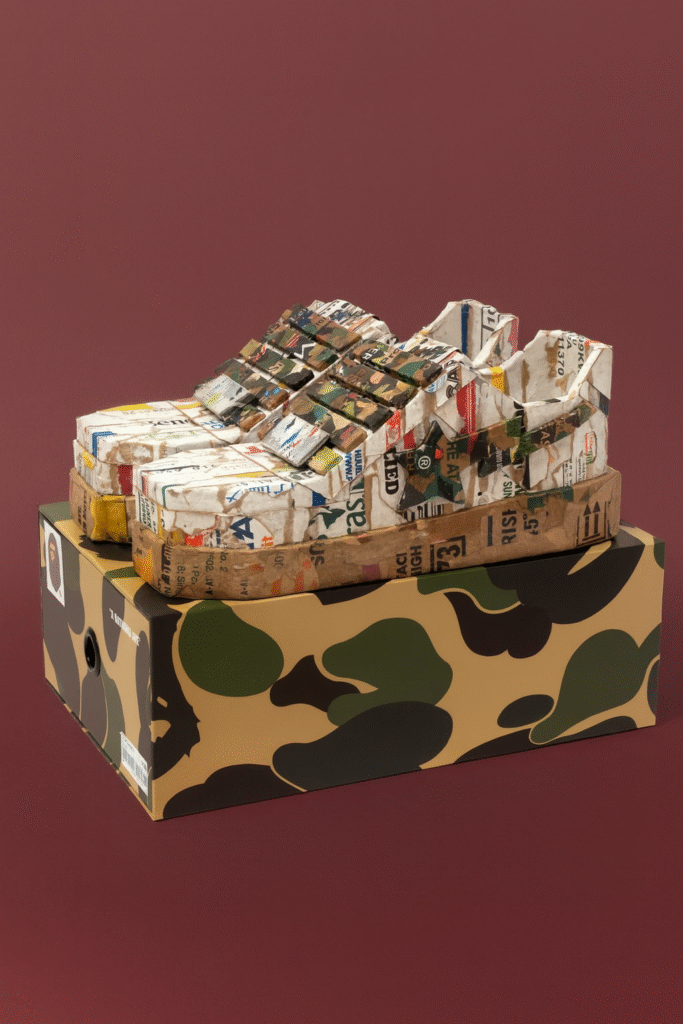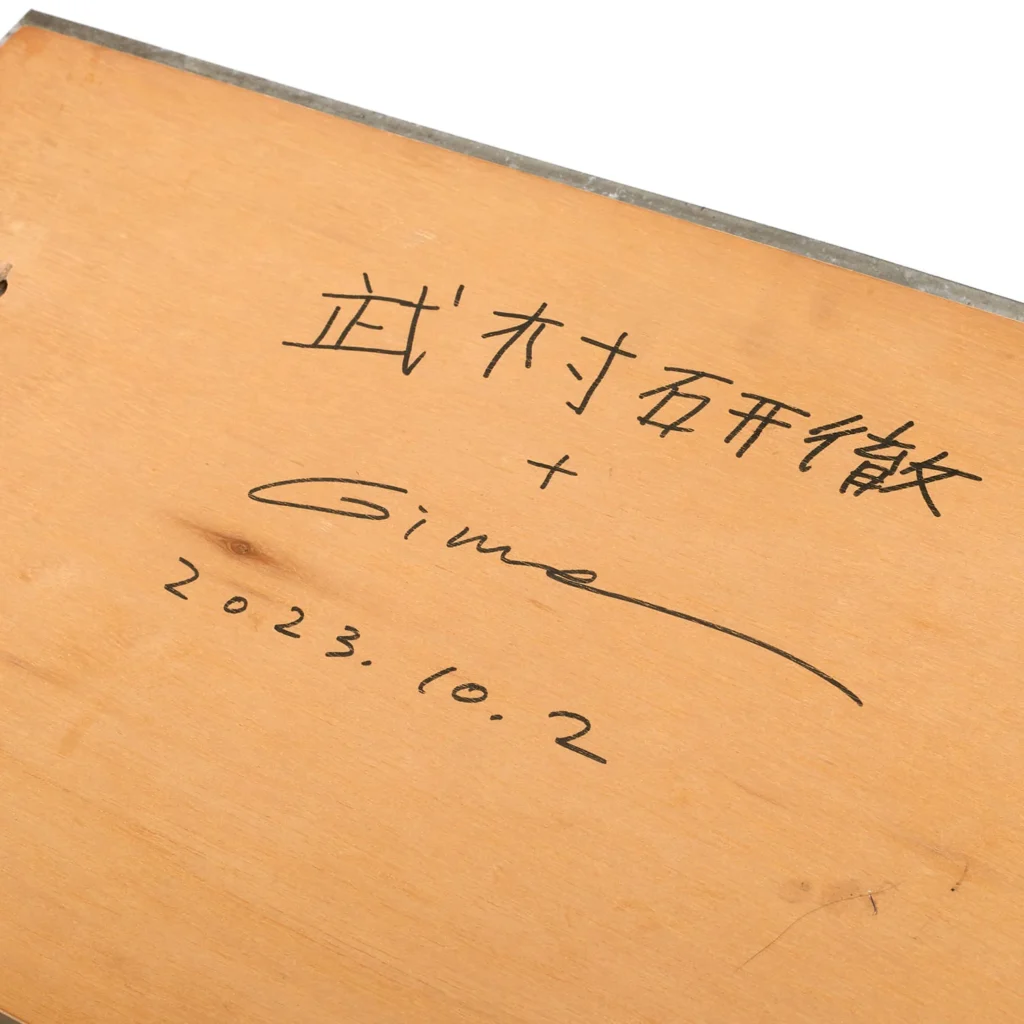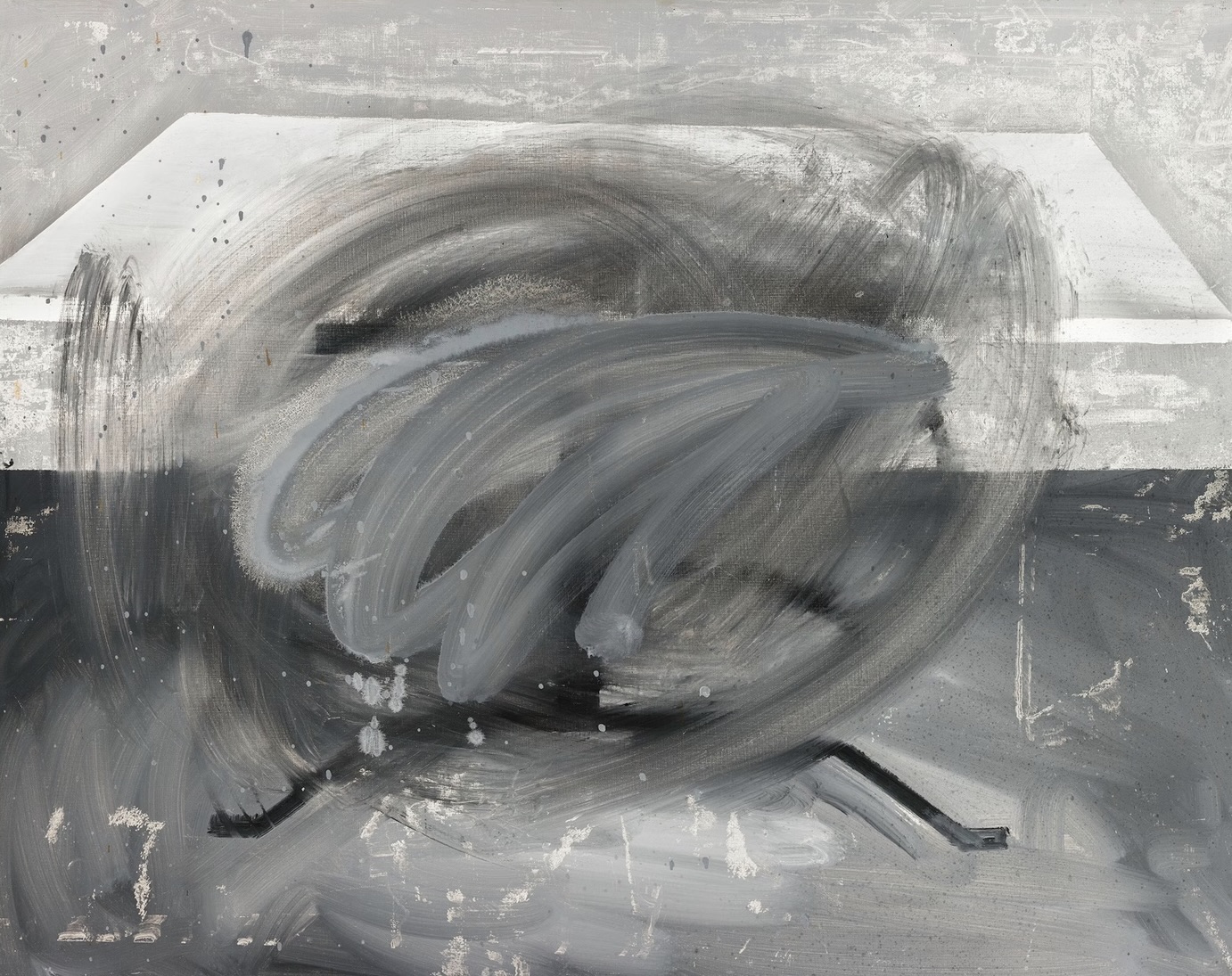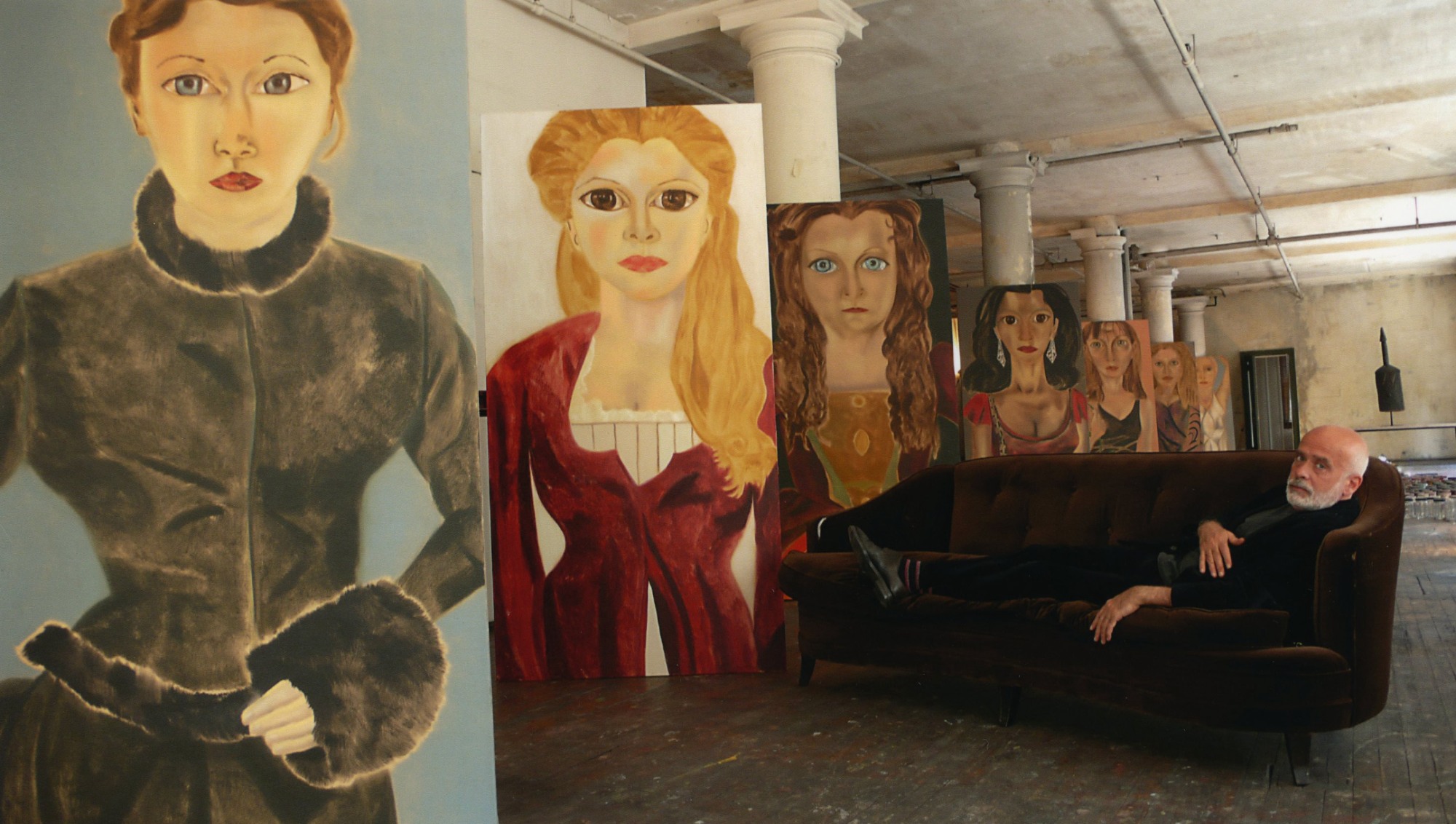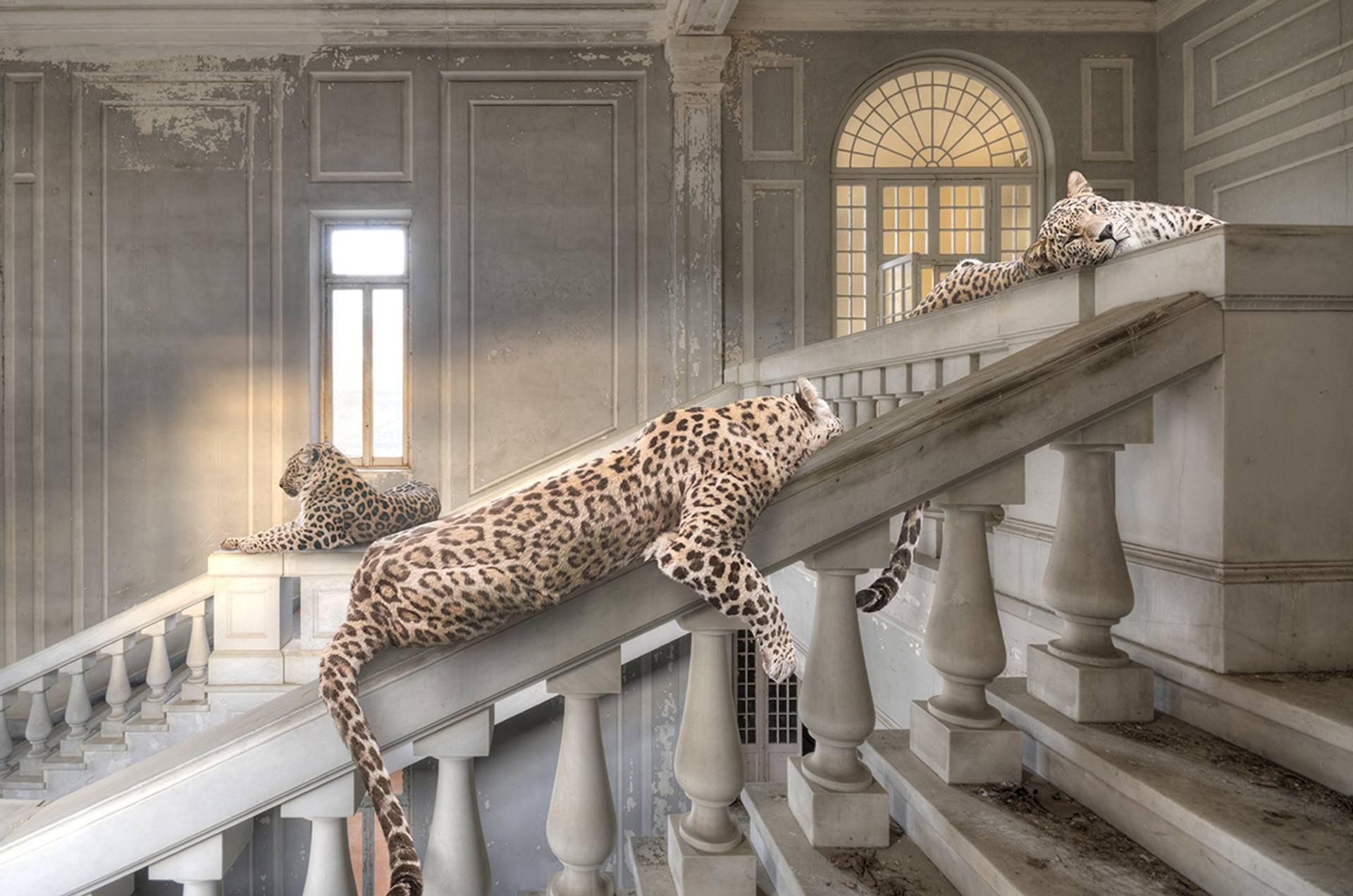reimagining waste as wonder
in the soft autumn light of shanghai’s dream center, babe gallery has turned into a living organism—part streetwear temple, part meditation chamber. tomotatsu gima, known for his meticulous transformation of discarded cardboard into monumental sculptures, has taken over the space with a solo exhibition that mixes art, fashion, and ecology.
the show runs from october 11 through november 2, 2025, and it’s the japanese artist’s most ambitious outing yet. working within babe’s ever-evolving cultural orbit, gima takes familiar icons from the brand’s mythology—the ape head, the camo pattern, the bape sta sneaker—and remakes them out of something fleeting and fragile. cardboard, tape, and packaging—the very materials that carry the objects of desire—become the art itself.
an anatomy of reinvention
the first work visitors encounter is a towering cardboard sneaker: a bape sta rendered entirely from reused boxes, their printed barcodes and logistics marks still visible under the paint. gima doesn’t hide the past life of his materials; he celebrates it. the corrugations are left raw, the edges uneven, the joins visible. it feels like a time-lapse of consumption and decay, condensed into one static yet breathing form.
elsewhere, the artist performs a kind of live ritual—taping together an ape head sculpture in camouflage duct tape. the action is quick, improvised, almost musical. gima treats duct tape like brushstrokes, pulling and layering it until it ripples under light. for an audience raised on street culture, it’s a moment of recognition: art made from the same tools that hold sneakers, boards, and posters together.
culture
china hums throughout the show, not as a motif but as a pulse. a sprawling wall collage folds in dragons, yin-yang symbols, and even app logos like wechat and alipay, layered among bape’s camouflage print. it’s a visual portrait of modern shanghai—commerce, tradition, technology, and aspiration, all colliding and coexisting.
rather than treat chinese imagery as borrowed aesthetics, gima internalizes it. the phoenix, a symbol of renewal, hovers above a field of packaging textures; the dragon curls around a recycled cardboard gate. in each work, the artist gestures toward the endless cycles of transformation: consumption, disposal, rebirth.
View this post on Instagram
where streetwear becomes sculpture
what makes the exhibition so gripping is not the novelty of recycled art, but its sincerity. gima’s practice sits at the crossroads of contemporary sculpture and streetwear’s visual identity. the camouflage is painted by hand; the sneaker silhouettes are carved, not cast. this tactile process reinstates a kind of humanity in an ecosystem driven by automation and overproduction.
babe gallery’s curators have leaned into that tension. spotlights cast long shadows across the walls, emphasizing the texture of cardboard ridges, the imperfections that digital design so often erases. walking through, one feels surrounded by the ghosts of packaging—objects that once held the promise of newness, now reassembled into monuments of reflection.
the poetics of impermanence
what emerges from gima’s show is a meditation on impermanence. cardboard is a fragile medium, vulnerable to humidity, sunlight, and time. by choosing it, the artist refuses the illusion of eternity that often defines luxury and art alike. he invites transience into the gallery, letting his works breathe, age, and even deteriorate.
this fragility becomes emotional resonance. each layer of tape, each torn edge, reads like memory—something lived through, not manufactured. in gima’s world, the disposable becomes devotional. it’s an aesthetic that feels both buddhist and streetwise: the beauty of the worn, the holy in the humble.
sustainability
unlike corporate “eco-collections,” gima’s approach to sustainability is not a posture—it’s an epistemology. he doesn’t aim to preach but to reframe perception. what if sustainability could look like joy? what if reuse could be radiant?
his answer is visual, not rhetorical. the works glow under warm light, their surfaces shimmering with recycled metallic foils and layered pigments. even the scraps swept from his studio floor are folded back into the installation. nothing is wasted, everything circulates. the result is an ecosystem more than an exhibition—a rhythm of renewal that mirrors the cycles of fashion itself.
the problem of spectacle
yet gima is not immune to irony. exhibiting under the babe name, in a glass-walled gallery surrounded by boutiques, his critique of consumption can’t fully escape its context. the brand’s logos hover everywhere, its mythology entwined with the art. but that’s the point. gima’s gesture is not to reject the system but to hack it—turning the machinery of desire into material for meditation.
in that sense, the show becomes self-aware: a mirror for a culture that photographs its ethics as eagerly as its outfits. still, within that mirror, gima carves sincerity—a belief that transformation, however compromised, is still possible.
an exhibition about seeing again
perhaps the greatest achievement of gima’s babe gallery presentation is that it makes viewers look twice. a sneaker that is not a sneaker, a logo that dissolves into texture, a cardboard box that becomes a shrine. these moments of re-seeing are where art lives.
in the final room, a mural arcs across the wall: phoenix wings, shipping labels, camo patches, wechat qr codes—all layered into a vast wave. it’s both chaotic and calm, like the rhythm of the city outside. and at its center, a single phrase—painted faintly on corrugated board—reads: everything circulates.
flow
as visitors leave, the smell of cardboard lingers. it’s strangely comforting—warm, dry, human. gima has done something rare: he’s turned waste into wonder, branding into reflection, spectacle into substance.
his exhibition at babe gallery shanghai isn’t about answers; it’s about continuities. the boxes we throw away, the symbols we wear, the worlds we inhabit—they all return, reshaped.
in an era obsessed with what’s next, tomotatsu gima offers a gentler, quieter challenge: to look again at what’s already here.
No comments yet.

